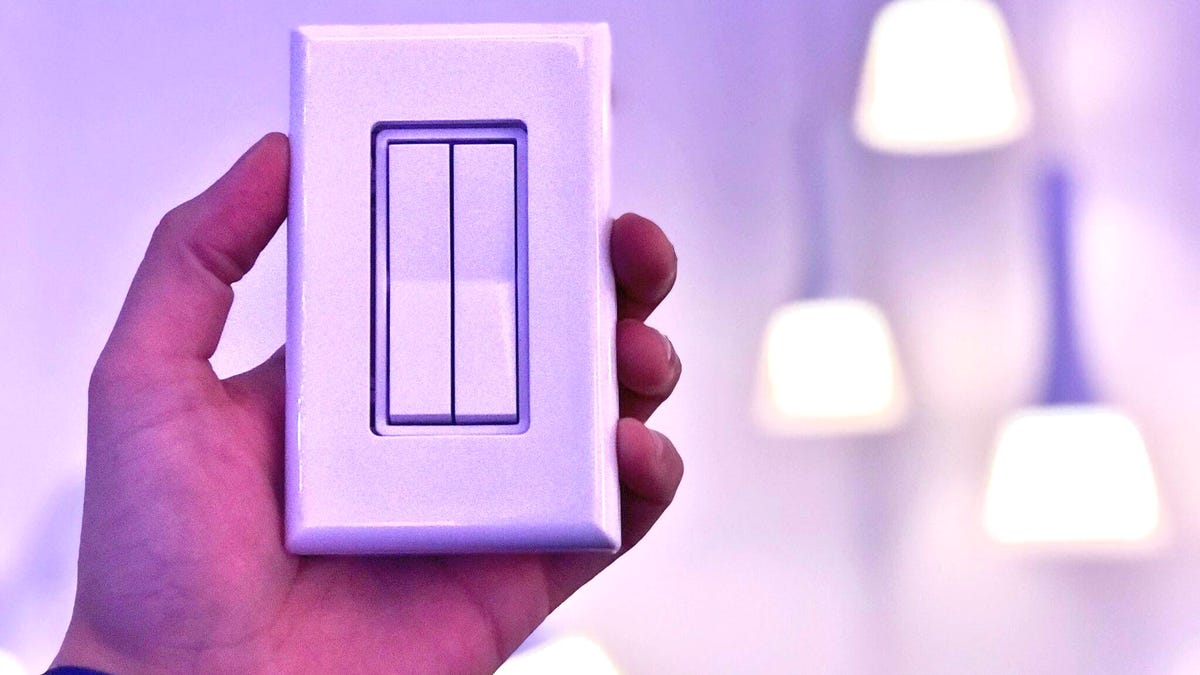This boring switch might be the best Philips Hue gadget yet
This light switch can trigger your Hue lights and scenes, and it'll work with HomeKit, too. Best of all, it requires no batteries or wiring.
Earlier this summer, I called the Philips Hue Tap the best smart home gadget you aren't using. It's a wireless, four-button remote that can trigger Hue lights and scenes -- and it uses some nifty technology to power itself entirely off of your button presses, no batteries necessary. Why, I bemoaned, hadn't Philips incorporated that awesome approach into more devices?
Well, jinxed it I guess, because that's precisely what Philips tells me it's about to do.
You can screw the new light switches in where your old ones were, or just stick them to the wall wherever you like using sticky tabs.
Specifically, Philips is adding a fleet of lighting manufacturers to its "Friends of Hue" -- one in the US and several in Europe, where switches are more diverse in design. The aim: Bring new, self-powering, Hue-compatible light switches to consumers. The first switch, pictured here, comes from Illumra and will arrive in the US by the end of this year. The European models will arrive early in 2019. Pricing isn't known right now, but Philips tells me it'll be up to the partners.
You can stick these four-button switches to the wall with sticky tabs, or you can simply remove your old switches and screw in the new ones in their place -- again, no wiring necessary. From there, you'll sync the switch up with your Philips Hue Bridge and tell it what you want each button to do. They can trigger scenes for one light or set of lights, or they can control separate lights. They'll also dim things up and down if you hold a button down, something the Hue Tap can't do without some assistance from Hue Labs.
Another strong selling point: With their Zigbee signals routed through the Phillips Hue Bridge, the new switches will work with Apple HomeKit. That means that you'll be able to use them to trigger your HomeKit scenes at the touch of a button, too.
Smart bulbs and smart light switches don't traditionally play nice, since the dual dimming mechanisms tend to clash and cause the bulbs to flicker and strobe. That won't be a problem with these switches, since they aren't wired in at all. And, best of all, when you use the switch to turn your Hue lights off, they'll remain powered. That means that you'll still be able to turn them back on via the app, or via voice commands with Alexa, Siri or the Google Assistant.
We'll know a lot more about these switches later in the year once we've had a chance to test them out in the CNET Smart Home. But for now, I'm willing to call my shot and say that the happy marriage between smart switch and smart bulb will be a significant step forward for smart lighting. Stay tuned in the coming months for more.
IFA 2018: The key announcements from summer's biggest tech show
Bosch at IFA 2018: Smart kitchen utopia, or rejected Black Mirror episode?


